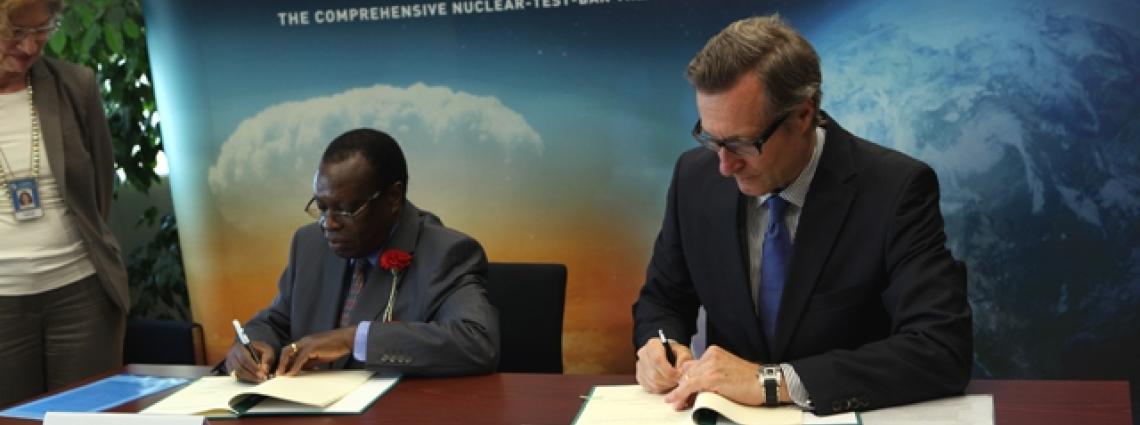Uganda signs Facility Agreement
On 15 June 2012, the Permanent Representative of Uganda to the United Nations in Vienna, Ambassador Francis K. Butagira, met with the Executive Secretary of the Preparatory Commission for the Comprehensive Nuclear-Test-Ban Treaty Organization (CTBTO), Tibor Tóth. They signed a facility agreement regarding the CTBTO monitoring station hosted by Uganda. The agreement entered into force with its signature.
Uganda takes pride in contributing to the detection of clandestine nuclear testing by hosting a CTBTO seismic station at Mbarara. Through the facility agreement signed today, we have put the already good cooperation with the CTBTO in running this station on a firm and sustainable legal basis.
Facility agreements formalize the cooperation between a host country of a monitoring facility and the CTBTO, regulating all political, legal and technical aspects in the maintenance and operation of a facility. Uganda is the 43rd host country to have concluded such an agreement with the CTBTO.
Uganda hosts auxiliary seismic station AS103, located in Mbarara in the southwest of the country, not far from the Rwandan border. The station, which was certified in November 2007, is one of the CTBTO’s 120 auxiliary seismic stations. Unlike the 50 primary seismic stations, auxiliary seismic stations send data in real time upon request only, normally to further examine an event detected by the primary seismic stations.
The Ugandan station is a three-component seismic station. Such stations have one seismic sensor that measures the three spatial components of the waves, i.e. up-down, East-West and North-South. This type of station also measures body waves and surface waves, thus providing information on the depth and strength of an event.
Uganda hosts auxiliary seismic station AS103, located in Mbarara in the southwest of the country, not far from the Rwandan border. The station, which was certified in November 2007, is one of the CTBTO’s 120 auxiliary seismic stations. Unlike the 50 primary seismic stations, auxiliary seismic stations send data in real time upon request only, normally to further examine an event detected by the primary seismic stations.
The Ugandan station is a three-component seismic station. Such stations have one seismic sensor that measures the three spatial components of the waves, i.e. up-down, East-West and North-South. This type of station also measures body waves and surface waves, thus providing information on the depth and strength of an event.
Today’s facility agreement rounds off the extensive support we enjoy from Uganda - in political, financial and technical terms.
Uganda signed the Comprehensive Nuclear-Test-Ban Treaty (CTBT) on 7 November 1996, shortly after its opening for signature, and ratified it on 14 March 2001.
Read more about:
Read more about:
7 Jun 2012
